When it comes to fueling growth for your managed service provider (MSP) business, it may be easy to overlook your hiring practices. Recruiting top talent will help you improve your service delivery, customer service, and company culture. But putting the right team in place is a bit more complex than looking over resumes and finding the best candidates on paper. In this blog, we’ll explore the four types of employees you may come across, which are best to hire, which are best avoided, and how to handle the employees and candidates you end up with.
Using the four-quadrant matrix
To organize your candidates and employees by their strengths and weaknesses, you can use this four-quadrant matrix. This will help you assess candidates based on both their technical abilities and character.
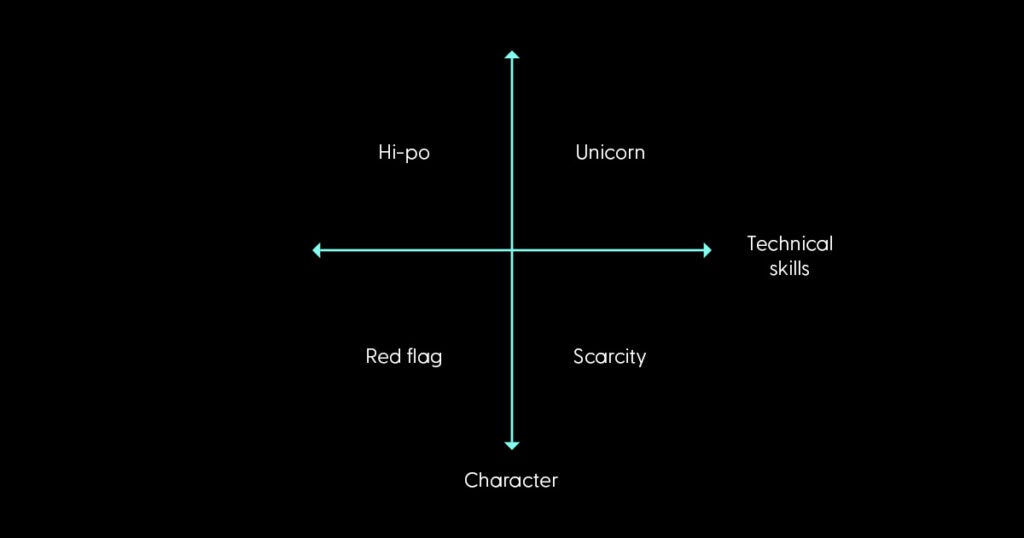
The matrix constitutes putting technical skills on one axis and character on the other, the latter consisting of less tangible traits, such as culture fit, ambition, likeability, and resilience.
Defining the four types of employees you may encounter
Using this matrix, you may place your job candidates and existing employees into four distinct categories. Roughly, these can be described in the following ways:
-
-
- Red flag hire: A poor fit in both the technical skills needed for the role and your company culture, these are candidates you may exclude right off the bat, as they require too much handholding and tend to deliver subpar results.
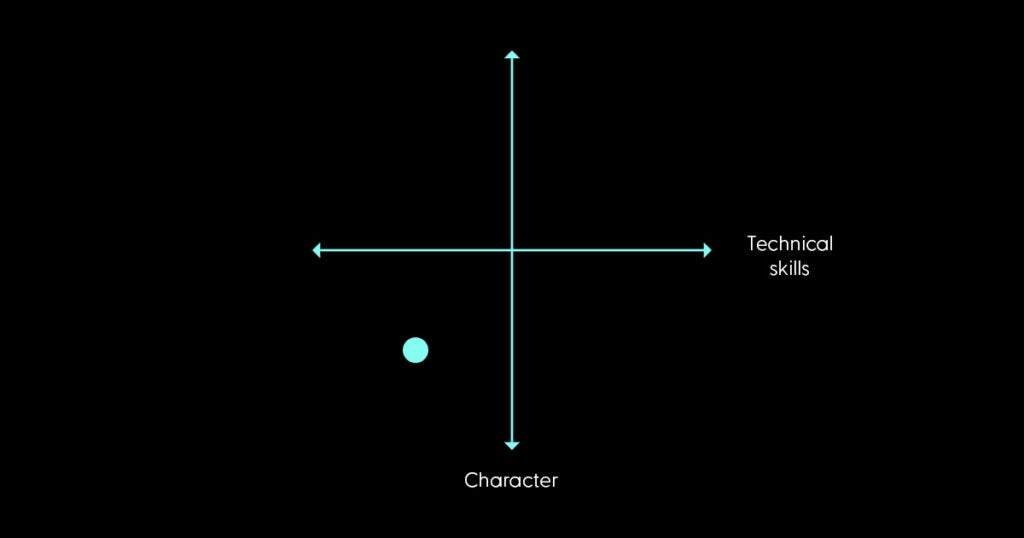
- Red flag hire: A poor fit in both the technical skills needed for the role and your company culture, these are candidates you may exclude right off the bat, as they require too much handholding and tend to deliver subpar results.
-
- Scarcity hire: Some candidates should come with a “buyer beware” sticker. These employees would have the technical skills needed to get the job done but would require a significant amount of management or insulation to ensure the rest of the team continues to be productive and satisfied. Candidates that fit this description should primarily be considered if their area of expertise is rare or so niche that it would be difficult to find a pool of potential candidates with a similarly competitive skillset.
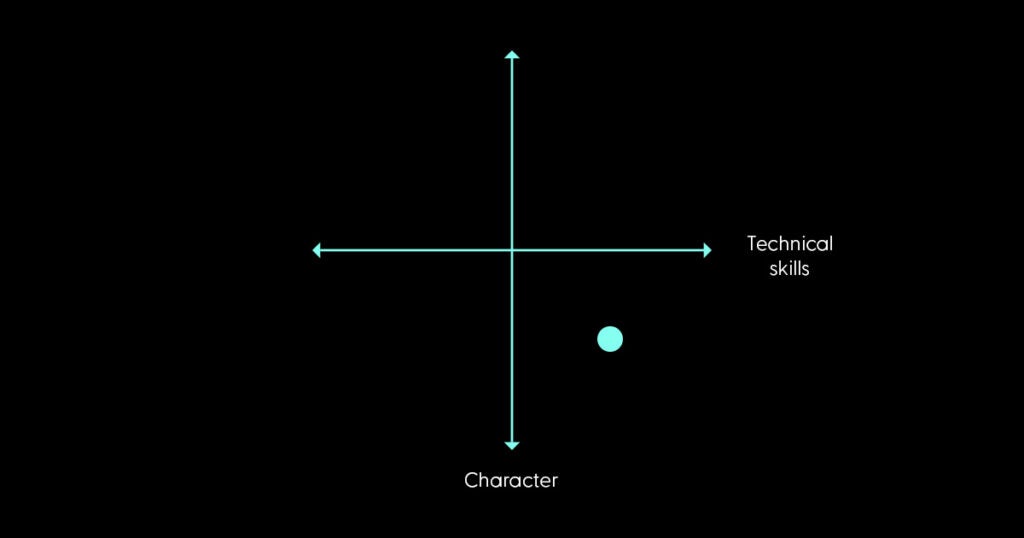
- Scarcity hire: Some candidates should come with a “buyer beware” sticker. These employees would have the technical skills needed to get the job done but would require a significant amount of management or insulation to ensure the rest of the team continues to be productive and satisfied. Candidates that fit this description should primarily be considered if their area of expertise is rare or so niche that it would be difficult to find a pool of potential candidates with a similarly competitive skillset.
-
- Unicorn hire: These are candidates that seem perfect right off the bat, displaying both the technical knowledge needed for the job and the interpersonal skills that make people easy to work with. While the proverbial unicorn may seem like the perfect hire, these employees prove harder to motivate and retain.
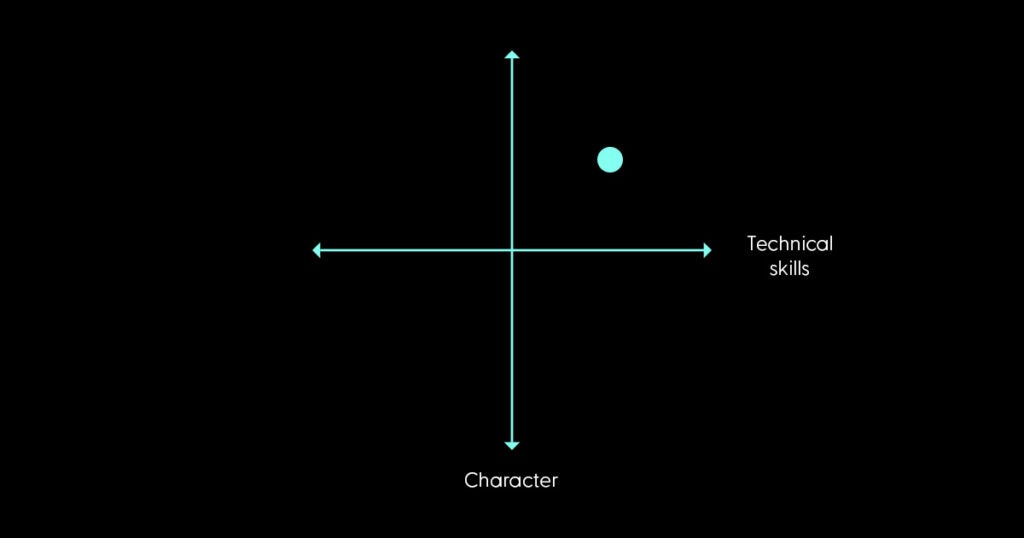
- Unicorn hire: These are candidates that seem perfect right off the bat, displaying both the technical knowledge needed for the job and the interpersonal skills that make people easy to work with. While the proverbial unicorn may seem like the perfect hire, these employees prove harder to motivate and retain.
-
- High-po hire: These “high potential” candidates fall lower on the technical side of things but are agreeable in a way that fits in with your organization. Finding candidates within the sweet spot in this range is ideal, as they can be developed into top performers — with the right training. After all, technical skills can be taught; interpersonal skills, less so.
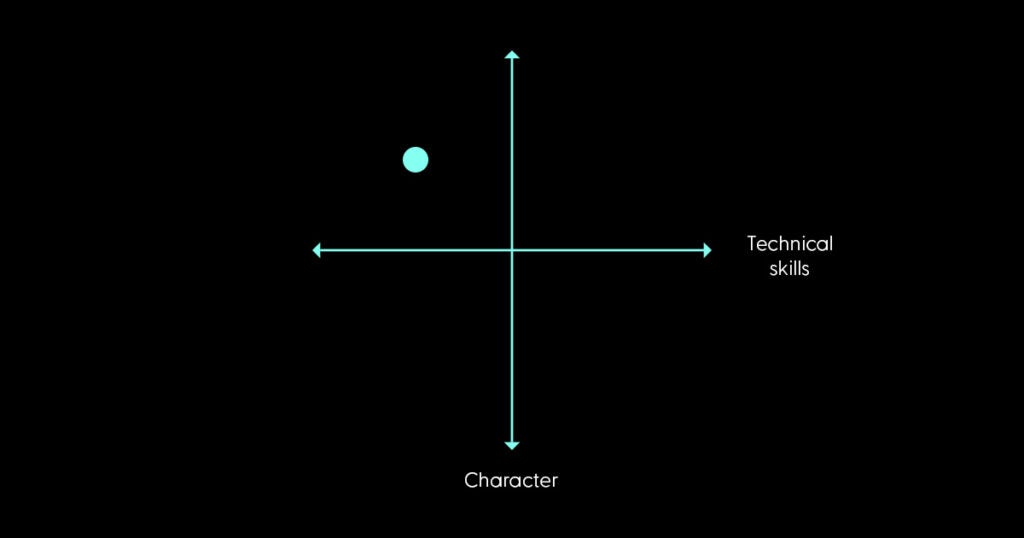
- High-po hire: These “high potential” candidates fall lower on the technical side of things but are agreeable in a way that fits in with your organization. Finding candidates within the sweet spot in this range is ideal, as they can be developed into top performers — with the right training. After all, technical skills can be taught; interpersonal skills, less so.
-
Ranking your candidates
Ranking a candidate from a technical standpoint is a bit more cut and dry, judging by a candidate’s experience. Rank this on a 1-to-10 scale, then place them on the X axis. For example, a 1 would be all the way on the left, a 10 all the way on the right, and a 5 or 6 just left or right of the Y axis, accordingly.
Next, rank their character. When it comes to this ranking, don’t overthink it. This often comes down to a gut feeling when you encounter someone during the interview process. However, there are some things you can look for in a resume to tip you off. For instance, did this person undergo extensive training late in their career? If so, that could signify someone who’s both ambitious and flexible, qualities that are worth their weight in gold when it comes to reliable employees.
For help determining a candidate or employee’s character, you can rank them on these soft skills on a range of 1 to 10:
- Culture fit
- Ambition
- Likeability
- Resilience
You can use the average of these numbers to place the candidate on the Y axis for their character score. From there, see which quadrant the candidate falls into and label them accordingly.
What should my employee breakdown be?
Of course, you can hire all high-po candidates. However, without some highly skilled individuals on staff, there’s no one to train your new hires.
A good rule of thumb would be to hire 20 percent unicorns or highly trained individuals and 80 percent high-po. This will give you the company makeup that helps you be effective while reducing employee turnover.
Why wouldn’t I just hire all unicorns?
Besides the fact that both highly skilled and agreeable individuals are difficult to find, they can be costly. In addition, they may end up leaving the company if they’re not adequately challenged, promoted, or compensated.
To illustrate this fact further, think about what makes employees happy. (Hint: It’s not just compensation.) Employee satisfaction comes down to three factors:
- Autonomy: Employees should feel free to do their job as they see fit. And when they make a mistake (and they will), they should feel comfortable owning up to it and trying to solve the problem on their own, increasing both engagement and efficiency.
- Mastery: This, quite simply, refers to the ability to do the job from a technical standpoint. Consistently challenging your employees to learn new things and improve will not only improve the level of service you provide, but it can also prove highly rewarding.
- Mission: Your employees need to believe in your mission, or the purpose behind your business, so they can see how their work directly impacts it. (If you haven’t yet developed a mission statement, do that now.) Your employees should feel connected to your mission and how their work directly contributes to it.
When it comes to your unicorn employees, they might struggle with the mastery lever of employee satisfaction. If there’s nothing left for them to learn, they could get bored quickly.
What do you do with the employees or candidates you have?
Following these guidelines is easier said than done, and you may already have a staff to contend with. Here are some tips on dealing with the employees you have, based on the traits assigned to them through the matrix:
- Red flag hire: You may be tempted to hire someone that falls into this category due to a lack of qualified candidates. In a word, don’t. It’s better to have no one in a role than someone who drags you down, and it will end up costing you more money to hire and deal with this employee than it will to leave the role empty for the time being.
- Scarcity hire: If you find yourself with someone who ranks highly in technical skills but low in character (or absolutely need someone to fill a technical role that lacks in the character department), you have some options. For instance, you could seek a way to insulate them from others within the organization so they can do their work with little interaction. The goal is to minimize the impact they may have from a culture standpoint, lest they introduce toxicity to the workplace that can easily spread.
- Unicorn hire: For your highly technical and well-adjusted employees, you should have a plan for them to move up within the organization and challenge them more — and communicate that to them. Great employees often know they’re great, and they may be poached or leave of their own volition, if they don’t see a long-term path at your organization.
- High-po hire: Invest. Let these candidates know that they will receive training on the job, and consider sponsoring educational opportunities as well. Most candidates will be happy to learn they’re getting free training and will stick around — it’s a win-win.
Other tips
Some final tips for you to consider are:
- When ranking employees by their character, be aware of your own biases. You aren’t looking for a new best friend, but rather someone that adds something positive to your organization. Diversity is key, as you don’t want to have all of the same type of employee at your organization, but rather a complementary mix.
- Don’t overly worry about breaks in a resume. The candidate may have taken time to undergo training, have a child, or try something that didn’t end up working out — all of which could signify resilience. If they have an adequate explanation and the rest of their resume checks out, it’s not a red flag.
- Rely on referrals for judging character. If someone you trust vouches for a candidate, that’s highly valuable intel.
- Work with each of your employees to build a plan for them, and your organization, that maximizes value for everyone involved.
Setting the right example
As Jocko Willink wisely said, “It’s not what you preach, it’s what you tolerate.” Leading by example and investing in the right talent helps you create a culture that promotes excellence and accountability.
Craig Donovan, Chief Experience Officer at Pax8, started in the software development realm and built teams of software engineers for 20 years. He assembled the first professional services team at Pax8 and has worked in MSP-related functions for the past seven years. In his first few years at Pax8, he estimates he took part in hiring about 200 people and sat in on at least 1,000 interviews.
This blog was based on a popular session at Pax8 Beyond 2024. Missed the show? Join us next June for Pax8 Beyond 2025.





